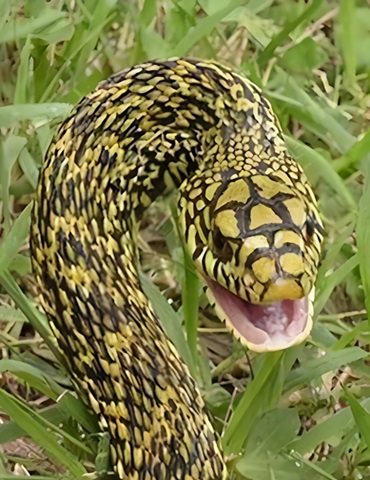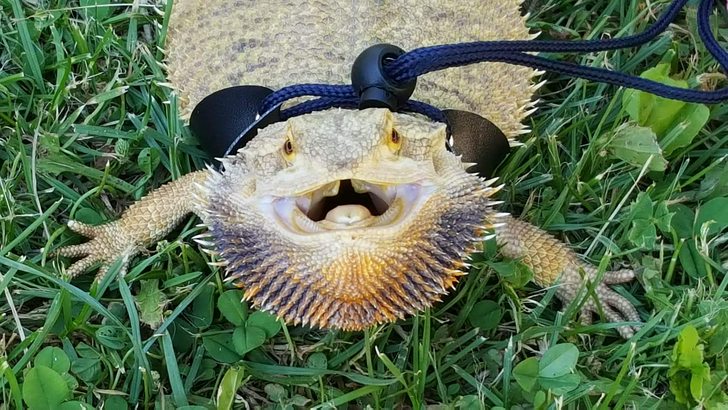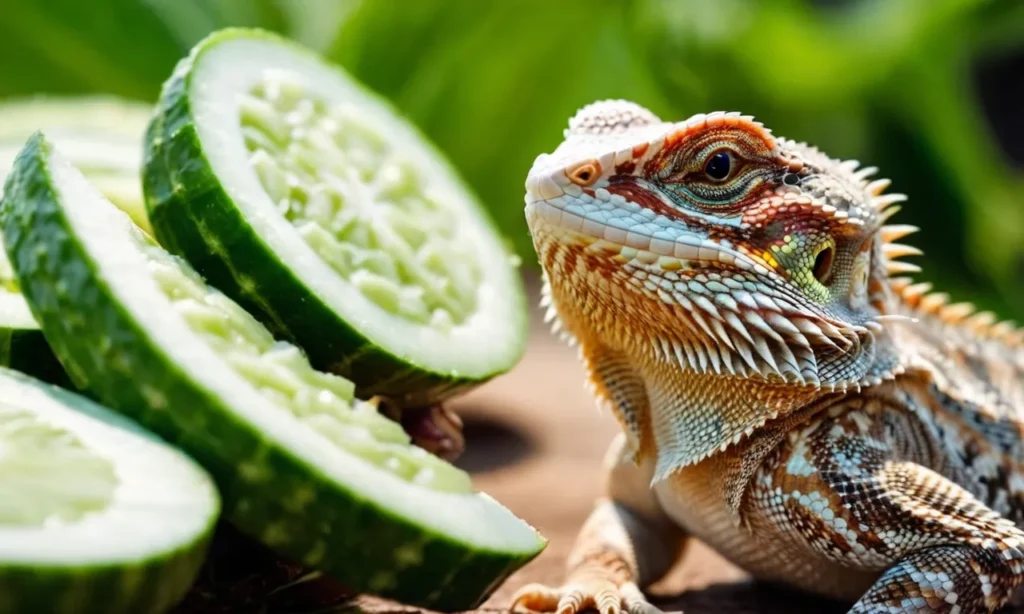The Elaphe carinata, commonly known as the King Rat Snake, Vegetable Flower Snake, or Yellow-striped Snake, is a large species with a total length exceeding 2.5 meters. It features an oval-shaped head with a blunt snout and a distinctive ‘king’-shaped pattern on its head. The anterior part of its body displays alternating yellow and black colors, while the posterior lacks patterns and appears darker. When coiled, its coloration resembles that of rapeseed flowers, earning it the nickname ‘Vegetable Flower Snake.’ In some regions, it is also referred to as ‘Yellow Python Snake’ or ‘Pine Flower Snake.’
In China, the King Rat Snake is primarily distributed across Zhejiang, Jiangxi, Anhui, Jiangsu, Fujian, Hunan, Hubei, Guangxi, Guangdong, Yunnan, Guizhou, Shaanxi, Henan, Gansu, and Taiwan. Variations in coloration exist among populations from different regions. Generally, northern specimens exhibit brighter and more vibrant yellow hues, while southern individuals tend to be darker or blackish. Specimens from Taiwan, Deqin in Yunnan, and Japan’s Ryukyu Islands display a dark green coloration. The King Rat Snake is highly voracious and has a diverse diet, ranging from small mammals and birds to lizards, and even other snake species. It plays a crucial role in controlling urban and agricultural pests, including brown rats (large rodents that even cats struggle to handle). This snake is particularly fond of preying on bird eggs and nestlings, often climbing to treetops to raid nests, despite being repeatedly driven away and harassed by protective parent birds. For captive care, provide a sufficiently large and sturdy enclosure with branches, rocks, and other structures for climbing and hiding. Maintain temperatures between 25-30°C and humidity levels at 60%-70%. Suitable food includes pinky mice and quails, ensuring freshness and appropriate size. Regularly clean the enclosure to maintain hygiene and monitor the snake’s health, addressing any issues promptly.


